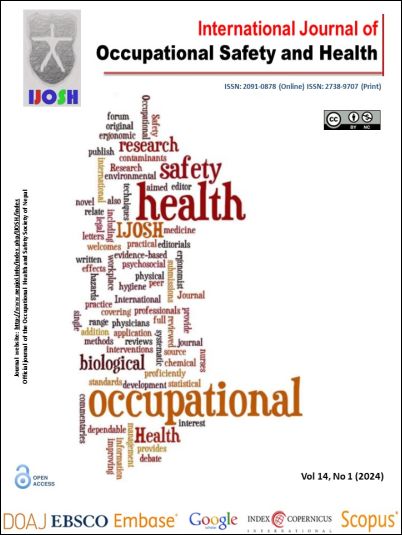Resumption of dental practice after COVID-19 lockdown: perspectives of dental professionals in Karachi, Pakistan
DOI:
https://doi.org/10.3126/ijosh.v14i1.51429Keywords:
Covid-19, dental practitioner, impactAbstract
Introduction: In the COVID-19 pandemic, the implementation of the lockdown led to the closure of dental practices. Restricting treatment to emergency patients, having to use Personal Protective Equipment and the fear of contracting the virus led to modifications in the techniques and methods used to provide efficient dental care to the patients. However, it caused a significant psychological and financial impact on the dental community. The purpose of this research was to evaluate dentists’ perceptions regarding the psychological, financial, and general impact of the COVID-19 pandemic on the reopening of their dental practices.
Methods: This cross-sectional analytical study was conducted using a validated questionnaire, which was distributed among 257 dental practitioners working in Karachi through the social media app (WhatsApp®) from May 2021 to May 2022. The questionnaire included four sections and 26 items, recording data for demographics, psychological effects on resumption of dental practices, workplace disinfection, and precautionary measures along financial impacts. Data were analyzed using SPSS, version 21.0. p-value ≤ 0.05 was taken as statistically significant
Results: A total of 200 filled questionnaires were received, making the response rate 77%. The majority of respondents were females (67%). More than half of the respondents (55.5%) were working in dental OPDs. Most participants affirmed that they did not have a COVID-19 screening area nor patient triage was being done in dental OPDs. Closure of dental practices caused financial problems for all dental practitioners, more specifically for those that were associated with both public and private types of practices (84.9%). The majority of the dentists in private practice (94.4%) declared that their workplaces were being disinfected, while 47.7% of dental practitioners working in the dental OPD affirmed that they had enough financial stability to keep using Personal Protective Equipment. Approximately 64.9% of professionals practicing in dental OPDs and 33.3% in private practice believed that the reopening of dental practices was responsible for the re-spread of the coronavirus
Conclusion: Significant anxiety and stress related to COVID-19 were seen among dental practitioners. Some CDC-recommended guidelines such as the use of Personal Protective Equipment were being implemented whereas COVID-19 screening and patient triage were found deficient.
Downloads
62
52
Downloads
Published
How to Cite
Issue
Section
License
Copyright (c) 2023 Sumaiya Zafar, Syed Yawar Ali Abidi, Samira Adnan, Maham Muneeb Lone, Isma Sajjad

This work is licensed under a Creative Commons Attribution-NonCommercial 4.0 International License.





